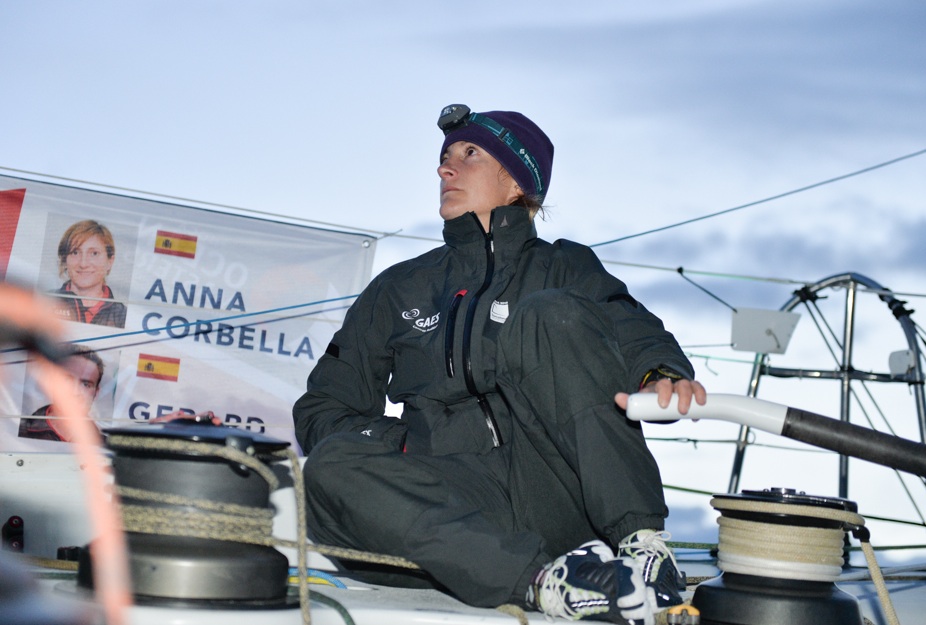
(Photos Christophe Favreau)
For someone who is not a professional sailor, to go on a trip on an IMOCA 60 is a rare privilege. Charlotte Guillemot and Christophe Favreau, two of the communications team members of Open Sports Management (OSM), event organisers of the IMOCA Ocean Masters New York to Barcelona Race, were both able to take part in the prologue race between Newport, Rhode Island, and New York.
For Guillemot (daughter of Safran skipper Marc’s cousin) and Favreau, this provided them with a clearer idea of the work of the on board ‘media crewmen’ who, for the transatlantic race, are charged with writing and sending in blogs, taking great photos and video footage and then transferring these across to the comms team back ashore in Barcelona. During the race the media crewmen will also answer any specific team and media requests made during the race – the first time the IMOCA Ocean Masters circuit has featured a dedicated on board media person during a major offshore race. Their objective is clear: to use the various media to provide followers of the race a glimpse of what life is like on board these extreme yachts as they experience ‘life on the inside’, something that the skippers sometimes struggle to achieve while they focus on trying to race their boats as fast as possible.
|
|
|
|
French photo journalist Christophe Favreau, was on board Team GAES and shared his impressions of the voyage from Newport to New York overnight on Saturday: “The first thing I will remember from this experience is that one has to remain constantly attentive and not be distracted by the incredible environment around you. To sail onboard an IMOCA 60 is amazing, but you have to be careful not to forget that before taking any enjoyment out of it, the media guy has to work, to take images that will allow him to share the story about a pair of skippers racing across the Atlantic. Photo and video camera in hand, it is all about finding the best angles that show the intensity that goes into racing a complex yacht such as this. Fortunately conditions were relatively manageable with never more than 15 knots of wind and calm seas that made the work relatively easy for me during the 150 mile race. It even allowed me to climb the mast to get a little height for my shooting, but it is easy to imagine that it would become much more complicated when the weather turns bad and the boat starts to slam into the waves with a violent action. Added to the difficulty of taking images is then the discomfort of working inside the boat. These IMOCA 60s are very rigid and solid and they quickly become uncomfortable and very noisy on board. The second point that I think is important is to ensure the skippers ‘forget that you are there’. Under the race rules each media man is prohibited from helping the sailing crew race the boat. They must not interfere with any of the manoeuvre, even if things go wrong! They have to embed himself into the crew, and to join in the rhythm of the team – a rhythm that often can be fast and challenging and to react to whatever conditions are thrown at him. During the prologue race on board GAES, we caught a fishing net and one of the team had to dive overboard to release it. So you have to react quickly, take photos and film as that’s an important story to tell, which shows that it is not always plain sailing on board – you have to stay alert and ready at all times, something that will be tough after a few days at sea when the tiredness starts to creep up on you..!” |
|
|
|
French video reporter Charlotte Guillemot, was on board Safran for the Prologue race : ‘Watch and film, be everywhere, without interfering in anything’. If I had a motto for the media person, that would be it. For me, to be in the right place at the right time, my sailing experience is always a great advantage : To know the boat well, its way of moving, understanding the different manœuvres, hoisting sails, understanding the crew intentions, in short pretty much becoming part of the team. The technical terms used during sailing can be complicated and in the height of a race there is no time to explain to you what is going to happen with each move. It is up to you to be in the place you need to be and absolutely vital that you don’t get in the way. While capturing footage you absolutely mustn’t get in the way. The media man is not allowed to get involved in any of the racing, but that does not alleviate the fact that life on board an IMOCA 60 at times is very uncomfortable. These are tough spartan boats that are built for speed, with no creature comforts and you feel that – even as the media guy. You have to share a communal bunk, eat freeze dried food, and the facilities for washing and the toilet are basic in the extreme ! But even given all that, this trip on Safran was a privilege for me. To be part of this great team, to feel almost like a proper part of the crew, but in particular to be the eyes of the people who will see the footage I shoot – this was an incredible experience.” I’ve had a taste of offshore sailing, while doing my filming job and I want more !! |


